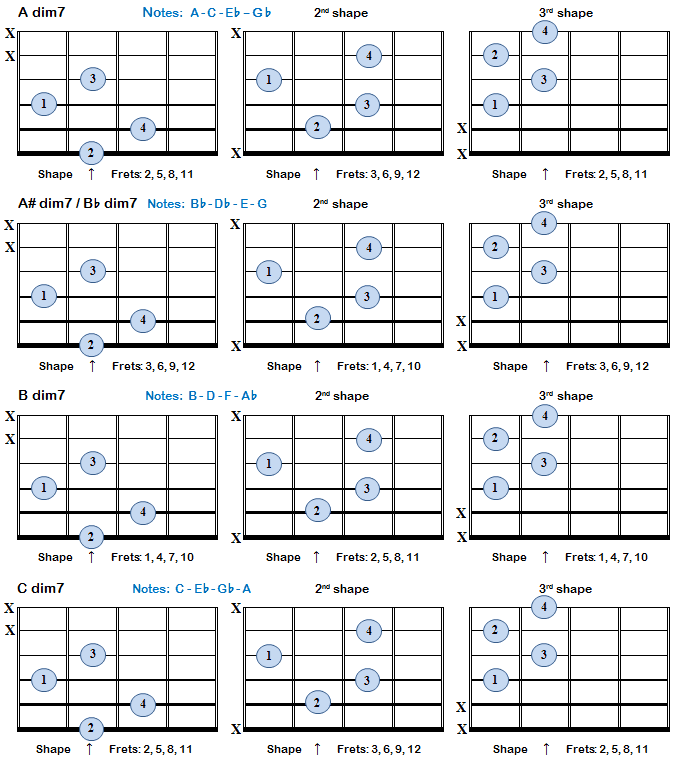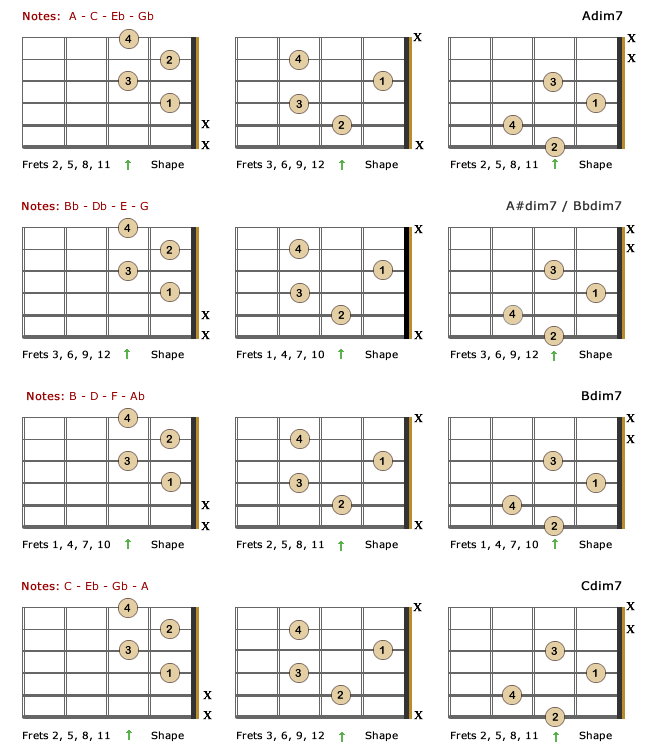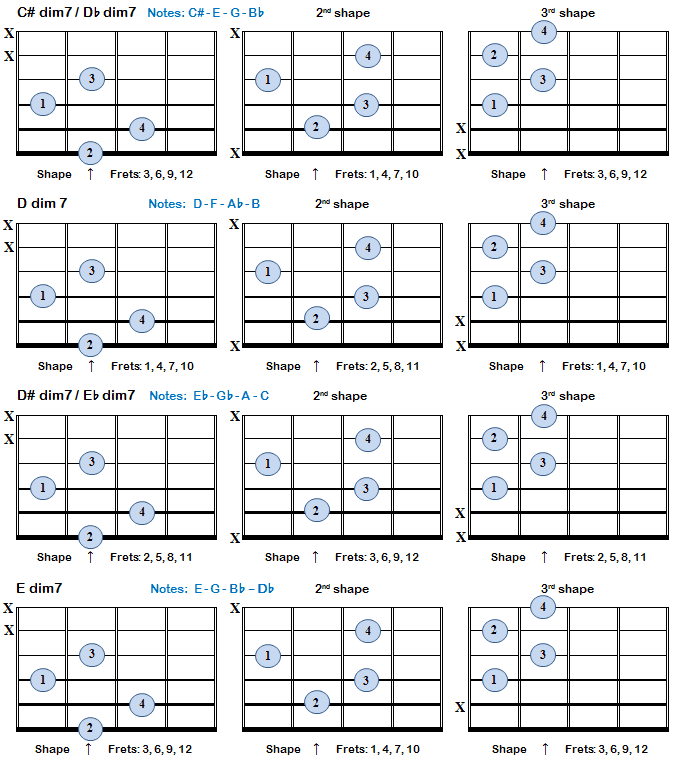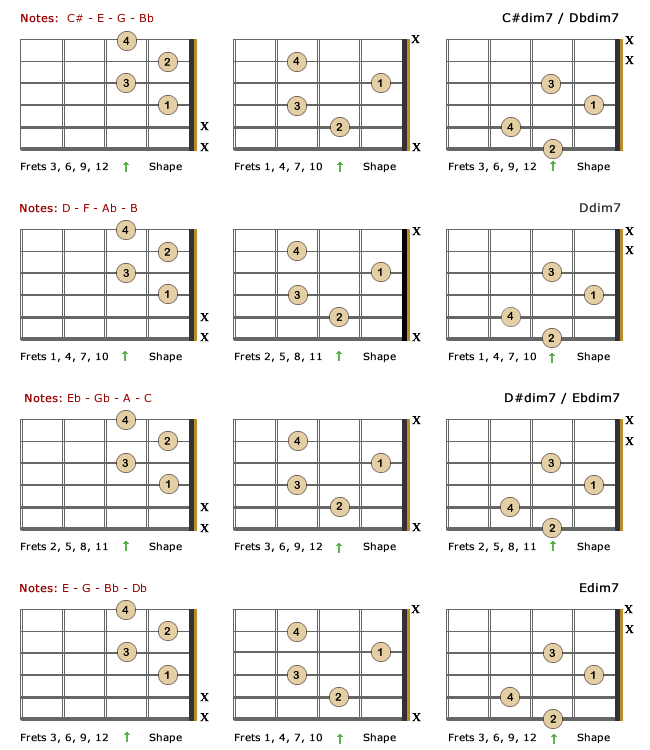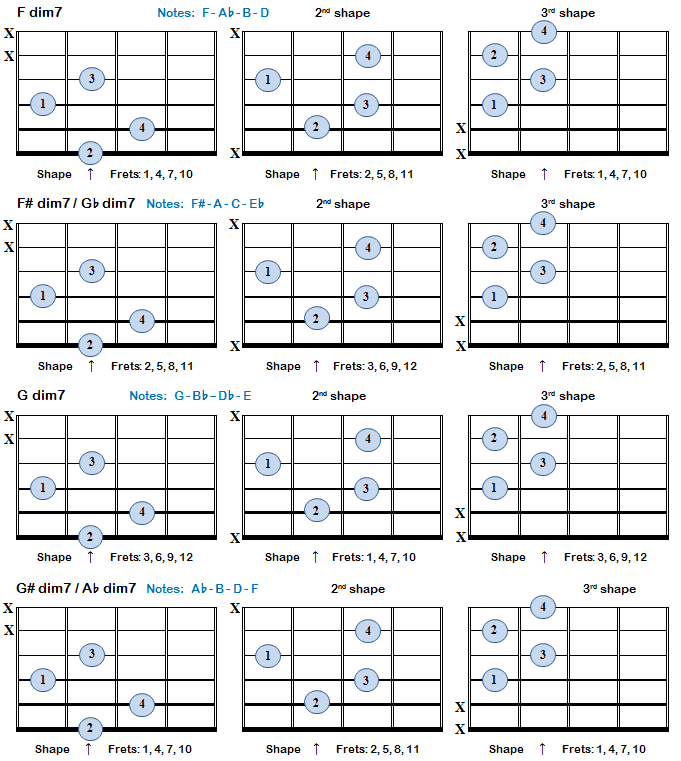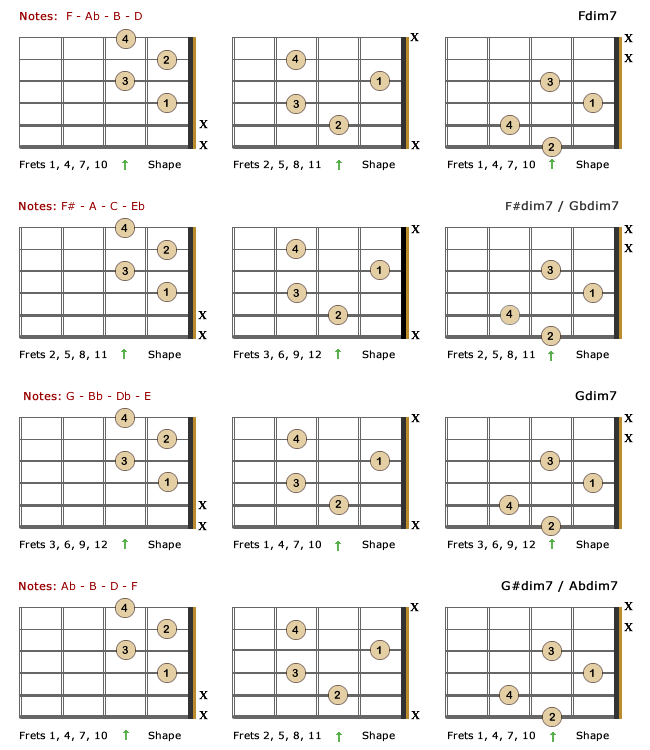Reading The Charts
All chord charts indicate different shapes on different fret positions rather than set fret positions. Generally, there are 3 different dim7 shapes and each one can be played in 4 different positions. Let's say that you like playing the third shape, and you are looking for a Cdim7 chord... as long as the shape stays intact and any one of your 4 fingers lands on a C note, you are playing a Cdim7 chord or an inversion of that chord depending on the leading note. The same applies to the other shapes.
If you want to play Cdim7 leading with a C note, you could play the 1st shape with the arrow representing the 8th fret, the second shape - arrow representing the 3rd fret, or the third shape with the arrow representing the 11th fret. You may want a sound that is higher up the fretboard or lower down or somewhere in between... a variety of flavors to choose from!
Symmetry
Diminished seventh chords are symmetrical, meaning they can be inverted multiple times to create different but related chords. In the example of Cdim7, this can also be interpreted as Ebdim7, Gbdim7, or Adim7 depending on the inversion:
- Cdim7 (root position): C-Eb-Gb-A
- Ebdim7 (first inversion of Cdim7): Eb-Gb-A-C
- Gbdim7 (second inversion of Cdim7): Gb-A-C-Eb
- Adim7 (third inversion of Cdim7): A-C-Eb-Gb
All of these chords contain the same four notes but arranged in different orders. They serve different harmonic functions and can be used in various musical contexts, depending on the chord progression and the desired musical effect. In essence, they are enharmonic equivalents with different bass notes, and their inversions can create interesting harmonic movement and tension in the music.
